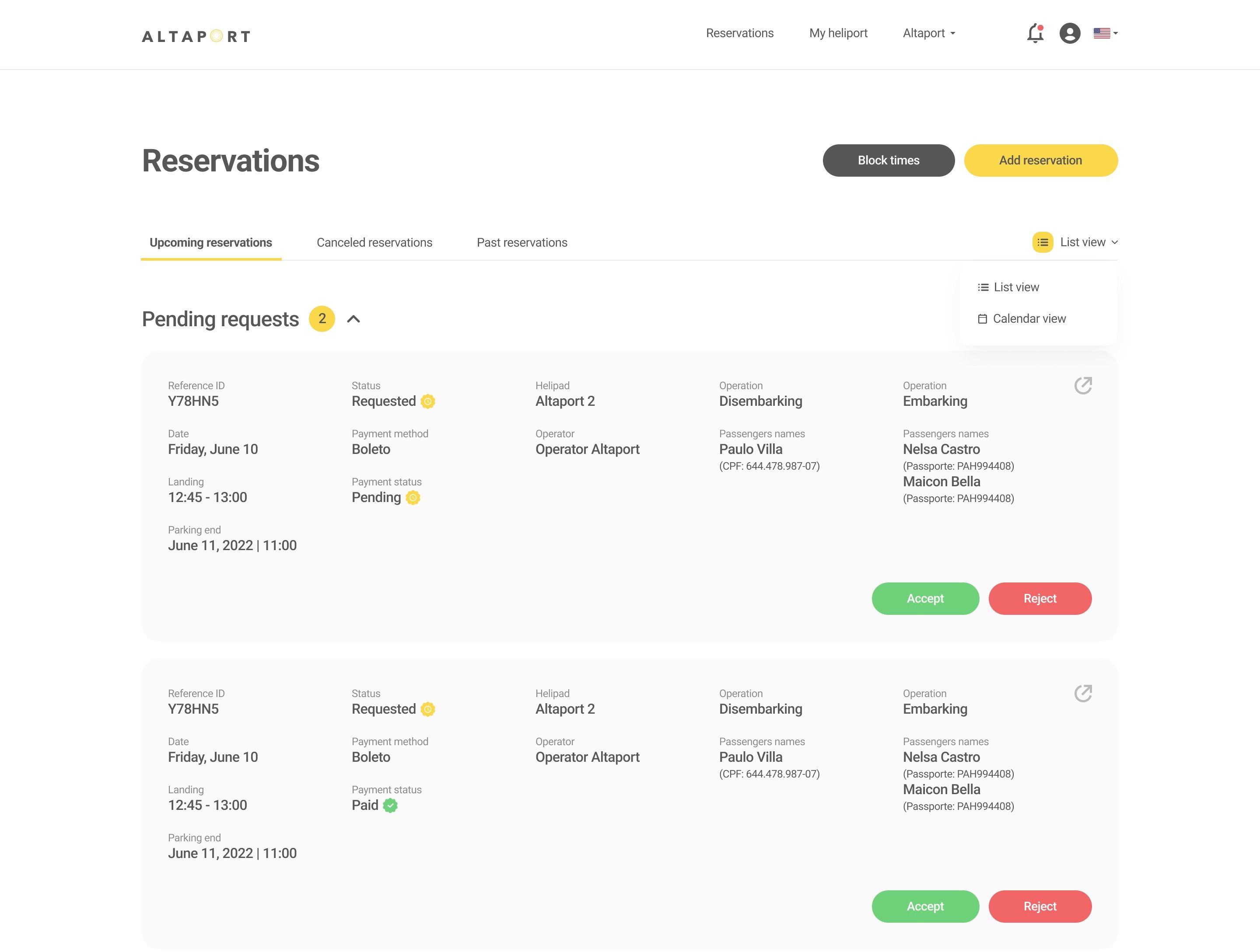Click Here to View This Page on Production Frontend
Click Here to Export Node Content
Click Here to View Printer-Friendly Version (Raw Backend)
Note: front-end display has links to styled print versions.
Content Node ID: 419949
Aerodrome automation specialist Altaport has signed new partnership agreements with six companies under which it would act as a systems integrator for vertiport infrastructure. The contracts announced this week cover joint efforts to develop a comprehensive vertiport management system, combining multiple critical systems into a single platform with “out-of-the-box capabilities” to facilitate the handling of high-volume ground operations for eVTOL aircraft and cargo drones.
The new partners include weather data analytics company TruWeather; eSTOL aircraft developer Electro.aero, which is providing charging stations; urban air mobility airspace awareness, security, and defense group Fortem Technologies; ground infrastructure operations monitoring and data services automation company 1200.aero; systems health and integrity software systems developer ResilianX; and ground handling operations automation specialist Moonware.
Together, the partners will incorporate data inputs such as low altitude micro-weather, automatic dependent surveillance-broadcast, foreign object debris detection, and airspace incursion sensors while managing ground activities like vehicle charging and ground support equipment allocation and movement.
Altaport’s software facilitates the management of what it calls high-tempo, autonomous ground activity, including resource scheduling, surface movement, ground service provisioning, passenger management, and vehicle charging. The partnerships augment those capabilities by providing real-time visibility into a number of factors that affect vertiport operations, said Altaport.
Altaport co-founder Cory Cozzens told FutureFlight that the origins of the software are in the need to resolve infrastructure shortcomings he says he identified while involved in launching Surf Air. Cozzens was a co-founder and senior vice president with the flight booking platform from 2011 to 2014, and has also served in senior roles with drone delivery service Matternet and the now defunct on-demand helicopter booking platform Voom.
“It was interesting to see that the GA [general aviation] airports and the heliports that we were working with really were working with an archaic tool set—spreadsheets, paper and pencil, and radios—for most of their operations,” said Cozzens. “As advanced air mobility promises higher volumes of operations, electrification, autonomous flights, the way airports are working today doesn’t alight very well with how we need them to work in the future to accommodate these operations—and certainly doesn’t align with how we need a future vertiport look.”
According to Salt Lake City-based Altaport, it has already applied its automation technology in Sao Paulo, Brazil, where it has developed a kind of resource management and scheduling service for the city's multiple heliports. Cozzens said that vertiports will benefit from the same concept.
“At most heliports around the world, you have to call, you have to text, you have to email, you have to do everything you can to try and get their attention so that you can schedule that landing,” he explained. “Some of the bigger ones you can just radio in when you're five minutes out. But that’s really limited to the biggest heliports like the ones that we see right there around Manhattan. Otherwise, you're doing everything you can at least 24 hours in advance to get that permission to land.”
Altaport’s app allows operators to identify heliport availability, schedule a landing time, send passenger information, and make payments. The capability, said Cozzens, will satisfy what he called a core need for vertiports in the future. He likened the platform to AirBnB, which he described as relatively simple technology that allows users access to any room, house, or apartment around the globe, creating what amounts to the world’s biggest hotel chain.
“That's very much how we think about what we're building and what we're doing,” he said. “Any operator can access those solutions to book a landing slot at any heliport that's on our network.
“But as we build this app, what we're looking at is, again, the future and what's going to be needed long term,” continued Cozzens. “And really that's an integrated and automated system where that app almost becomes irrelevant…I don't know who's actually going to operate these things, but…[the partnership between] United Airlines and Archer is a good example. Our solution should be integrated with whatever tools they're using for their flight planning where, through one source, [end users] can automatically book that landing slot at that vertiport that they need without having to jump around between a bunch of different apps. And then go another few, you know, go another few years beyond that where things are automated from end-to-end.”
